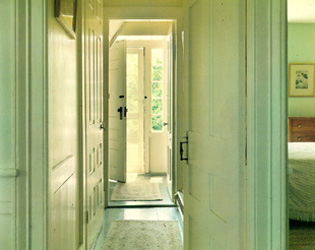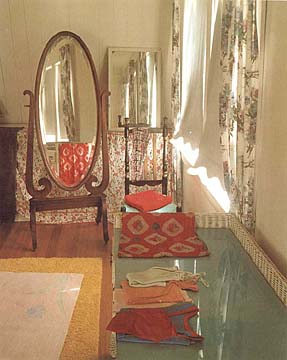 There are plenty of "important
architectural statements" that have fooled some of the people
some of the time, but not all of the people all the time. Eventually
they fall out of fashion and it becomes obvious that fashion was
all they had to offer. Unable to change clothes, they live out
what's left of their less-than-useful life as faded frumps. On
the other hand there are many soft-spoken, plainly dressed buildings
with "good bones" living usefully to a graceful old
age. This is what I mean by ordinary architecture.
There are plenty of "important
architectural statements" that have fooled some of the people
some of the time, but not all of the people all the time. Eventually
they fall out of fashion and it becomes obvious that fashion was
all they had to offer. Unable to change clothes, they live out
what's left of their less-than-useful life as faded frumps. On
the other hand there are many soft-spoken, plainly dressed buildings
with "good bones" living usefully to a graceful old
age. This is what I mean by ordinary architecture.I have been examining such a group of buildings as part of a state-wide historic survey: synagogues built in small Texas towns ca: 1850-1950. By every measure they are modest structures. The clients, lately immigrants to this country, had no social pretensions to fulfill. The groups were small: 20-50 families requiring seating of at most 200 persons. The program was basic: a single sanctuary naturally lit and ventilated, often a foyer flanked by a restroom and a utility room, and sometimes a social hall and kitchen in a basement. The whole package rarely exceeded 3500 square feet and many are less than 2000 sf. Details and finishes adhere to the conventional carpentered standard of the time. Any extravagance was invested in the stained-glass windows by families honoring signal events in the lives (and deaths) of their members.
These buildings are both ordinary and wonderful. It feels good to be in them and easy to imagine how well they suited their purposes. Those who grew up in them say it, and those who now occupy them (second, third, or fourth successive users) confirm it. They are not especially remarkable or beautiful in appearance. Other townspeople are barely aware of their existence, the buildings camoulflaged by anonymity.
Perhaps what makes them work so well is their simplicity, an intention so modest it would be
 difficult to miss.
They are certainly not unique as a class either in their time
or in ours. There are industrial field offices and power houses,
adjuncts to larger factory structures and probably designed by
junior engineers, which have that quality of appropriateness and
comfort which make them not only wonderful work places but good
places to be.
difficult to miss.
They are certainly not unique as a class either in their time
or in ours. There are industrial field offices and power houses,
adjuncts to larger factory structures and probably designed by
junior engineers, which have that quality of appropriateness and
comfort which make them not only wonderful work places but good
places to be. Every architect knows how increasing programmatic complexity can confound good design. Clients seek greater value/$ by stuffing more into the envelope. HVAC and silicone sealant can make bad buildings work (for a while). It takes clever design to keep all the programmatic balls in the air, which may be why cleverness is celebrated (and rewarded) as a virtue in architecture. It may also be why cleverness is often expressed as a visual or design conceit in the substance of the building itself: the little irony or historic allusion, the subtle formulae of configuration, proportion, or juxtapposition fully appreciated only by the cognescenti.
All of this suggests ordinariness as a model for design and professional practice if only by default or as antidote to egregrious grandstanding by architects and the encouraging applause by their fans. This is acceptable behavior in the theater where effects wear off in a few hours; but, on the ground and cast in concrete, they linger to annoy and obstruct. There is certainly a place for monumentality and the grand gesture. Everywhere and all the time may be excessive. More significant, however, it may in the long run be a bad buy.